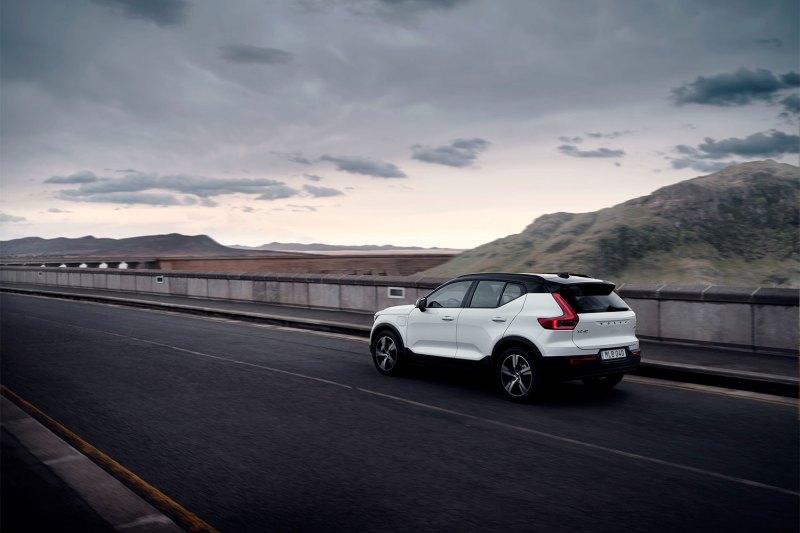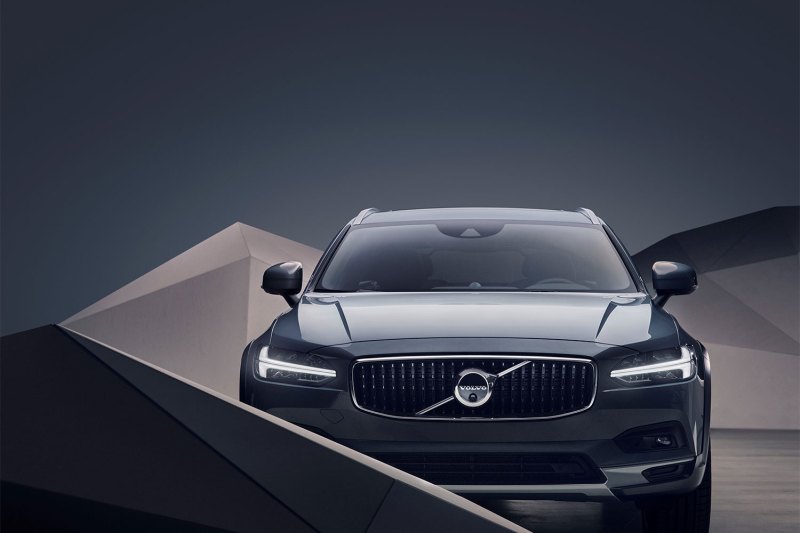Last March, Volvo announced that all of its vehicles — from sedans to wagons — would be limited to 112 mph from 2020 onward. At the time of the announcement, Volvo claimed the decision was made as a part of its Vision 2020 plan. That, if you didn’t know it existed, is centered around Volvo’s goal of making fatal injuries a thing of the past in every new Volvo by 2020.

It took a little over a year (the company announced the plan in March of 2019), but Volvo kept to its promise. Every new Volvo sold now comes with a top speed of just 112 mph. “We believe that a car maker has a responsibility to help improve traffic safety,” said Malin Ekholm, head of the Volvo Cars Safety Center.
The top-speed limiter was met with mixed emotions when it was introduced. Even Volvo admits that much. As the company puts it, consumers weren’t sure whether an automaker had a “right” to place such a limitation on vehicles. Despite the backlash, Volvo ventured forward with its plans, as it thought it was the right thing to do to be a pioneer in safety for the industry.
You know what? Volvo’s right. You shouldn’t be upset about this — and it’s something other automakers should do, too.
The first issue with consumers surrounding the speed limit is the fact that it exists. But Volvo isn’t the only automaker that has a speed limiter on its vehicles: The majority of German brands limit their respective vehicles to 155 mph and a few Jaguars are limited to 120 mph. Even Bugatti limited the top speed of the Veyron Super Sport, which was one of the fastest cars in the world for a little bit, for production vehicles to 257.9 from 267.81. Not a massive difference, but a limiter nonetheless.
Sorry to burst your bubble, but Volvo isn’t the only automaker to have a speed limiter. So if you’re mad it exists, you have to be mad at the other automakers, too. It’s only fair.

If it’s not the actual fact that the limiter exists, but possibly the speed itself, that’s just flawed judgment. According to the Insurance Institute for Highway Safety (IIHS), the highest speed limit in the United States is 85 mph on a specified stretch of road in Texas. Other than that, you’re looking at mostly 55, 65, and 70 mph. Even if you’re someone that likes to keep up with traffic, you’ll still be going well over the posted speed limit. If you happen to be traveling on a 70 mph road in a shiny, new Volvo, you can still go 42 mph over the limit before the 112 mph limiter becomes an issue. I like to drive a little quickly, but 42 mph over the limit seems excessive. Even on those stretches of 85 mph roads in Texas, you can go 27 mph over the limit. That’s more than enough.
In all honesty, the most I ever go on a posted highway when I’m trying to keep up with traffic is 20 over. Above that, my police-sense start tingling and my co-pilot, usually my wife, starts to complain. For me, I can’t recall the last time I went above 100 mph on a highway, so a 112 mph limiter seems like more than enough on public roads.
You may not want to wrap your head around the fact that speeding is dangerous, but it is. According to the National Highway Traffic Safety Administration (NHTSA), speeding accounted for 9,378 deaths in 2018. In 2017, speeding was a factor in 26% of all traffic fatalities. While modern cars are safer than ever before, they’re built around current speed limits, which are well below 112 mph.
Furthermore, not every car on the road is a brand-new Volvo. I remember when I lived in Detroit a few years back and saw a Chevrolet Cavalier on the road with a driver’s door that was behind held on by tape. In states where there are no safety inspections involved, people are legally allowed to drive cars that are being held together by a hope and a prayer. It won’t matter if you’re following the posted speed limit or going full tick at 112 mph, something bad is going to happen to the driver in the Cavalier if the car is involved in an accident.
Tickets are another huge thing with speeding. Despite being an auto journalist that gets to play with high-performance cars, I’ve, knock on wood, never received a ticket of any kind, largely because I don’t speed on large, open roads where police officers can hide. It’s also because I grew up in Virginia, which has some of the strictest laws on speeding and doesn’t allow drivers to have radar detectors. Going above 80 mph and traveling at a speed in excess of 20 mph over a posted speed limit results in a reckless driving charge that stays on your record for 11 years. These are classified as a misdemeanor in the state, but they still carry the same level of offense as a DUI. Furthermore, depending on the police officer or judge, your license could be suspended, you could serve time in jail, and you could be hit with up to a $2,500 fine.

So I grew up being afraid to speed. I, along with a few buddies in high school, rode motorcycles. We, being young, brave souls, went quickly on many occasions. But we always did it safely, on roads we knew and only after conducting a few short scouting missions to see if any police were hiding in the bushes ahead. It’s also when I learned to never speed on the highway, because you won’t get to your destination any quicker, at least not with the traffic in Northern Virginia, and it’s just not worth it.
My wife and I currently lease a 2020 Volvo S60. I brought up the fact that our Volvo had a 112 mph limit and my wife barely batted an eye at it. In all honesty, it doesn’t matter to either of us, and I don’t think it will for the majority of consumers shopping for a Volvo. If anything, they’ll see it as an additional safety feature.
But Joel, you may ask, what if I want to go to a track and need to wind my Volvo out? Well, how many times have you seen one of Volvo’s newer cars on the track? Sure, you might see an old clapped out 240 tearing it up at a high-performance day or on an autocross course, but Volvo hasn’t made any track-focused
My mom was the proud owner of a 240 when I was in high school. She got into a major accident when a driver going over the speed limit ran a red light and smashed into the side of her car. The 240 was totaled, but my mom was able to walk away from the incident without a scratch. I’m not sure if this is true or not, but growing up, I believed that the Volvo saved her life.
As far as I’m concerned, the 112 mph limiter is another way of saving a life. If it causes some anguish and makes some people upset about not being able to go well over the posted speed limit, that’s fine in my book. Because if the limiter saves even one life, it’s worth it. Volvo is the leader in safety in the automotive world and it knows what it’s doing. For the most part, we all get into our 5,000-pound machines constructed out of metal, plastic, cloth, and leather and hurl down the road without a second thought about safety. It’s something we all take for granted. If someone else is thinking about your well-being and thinks they have a good idea on how to make all of us safe, it’s probably best for us to listen.



